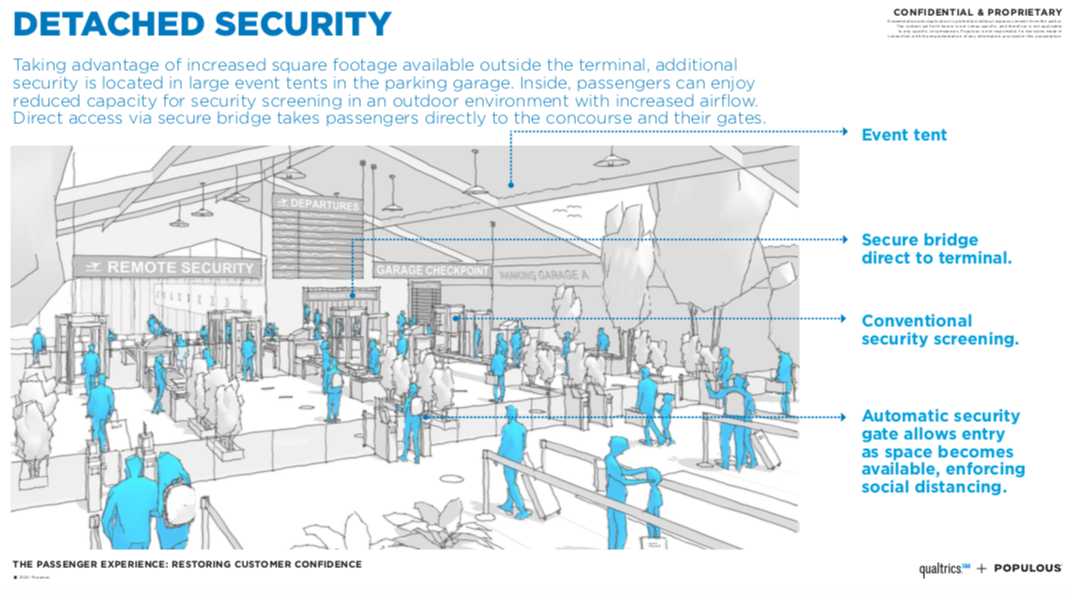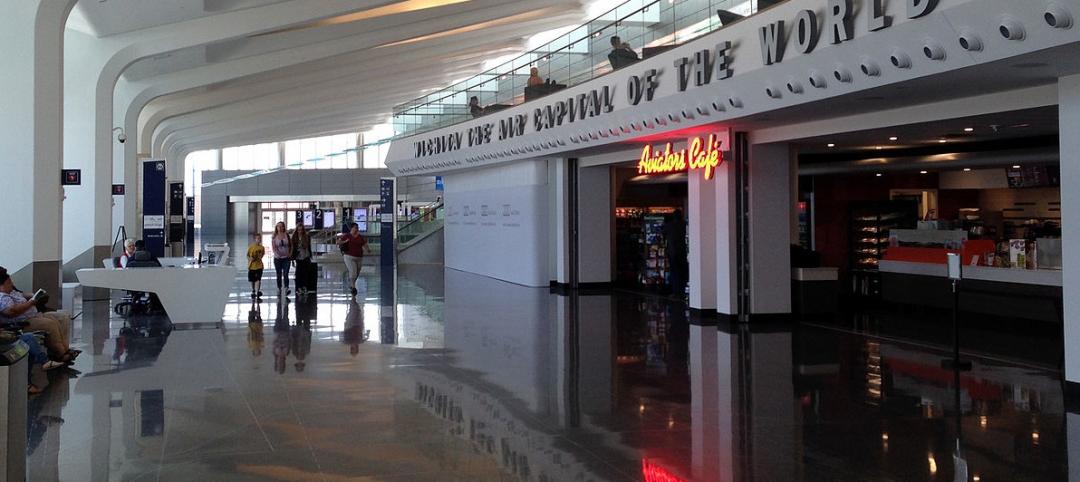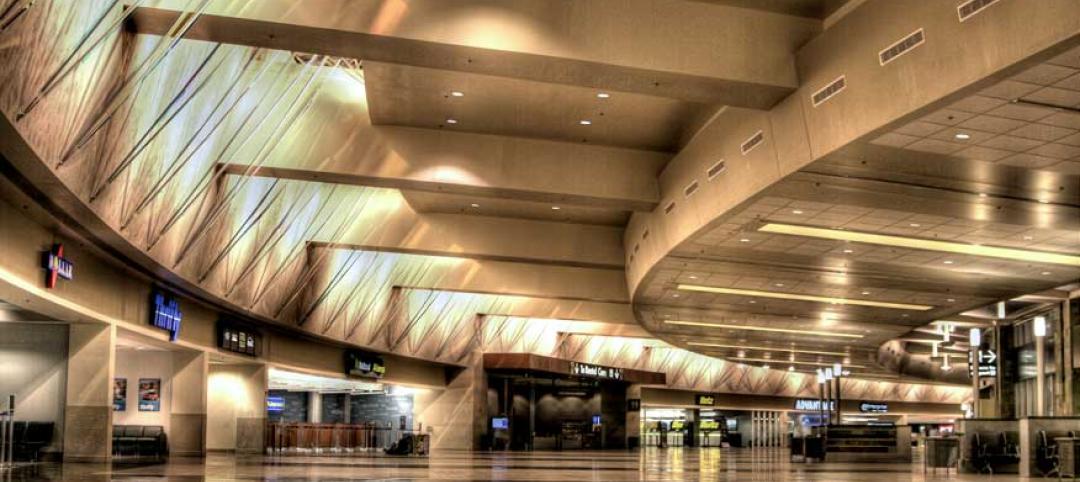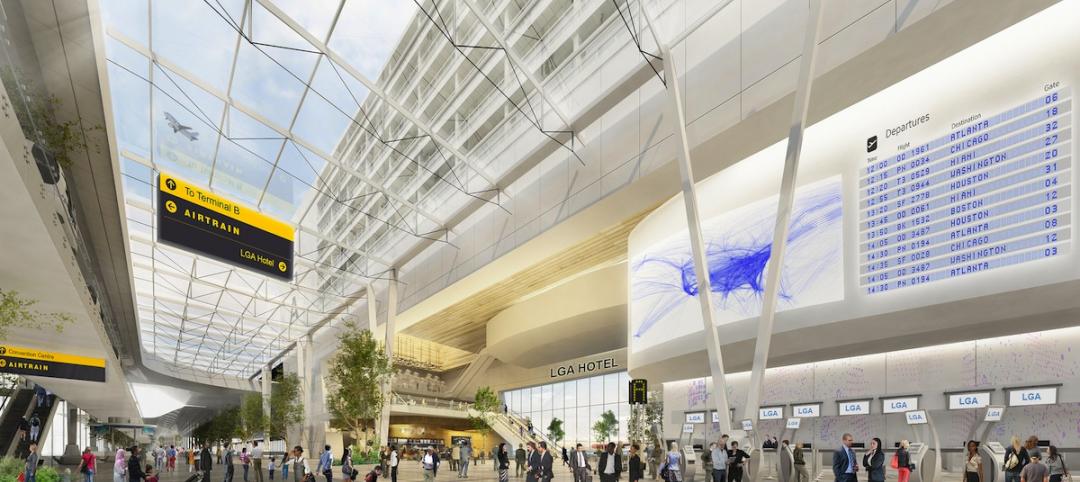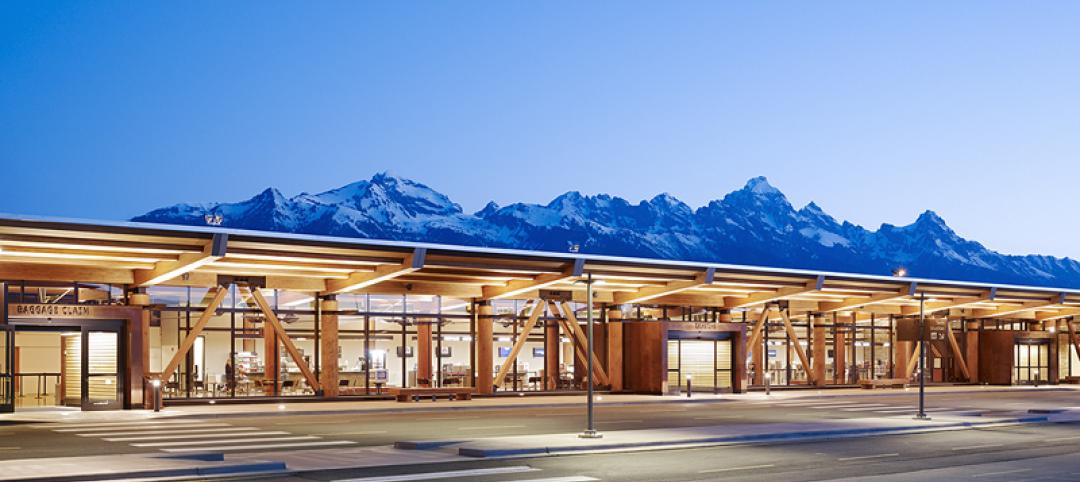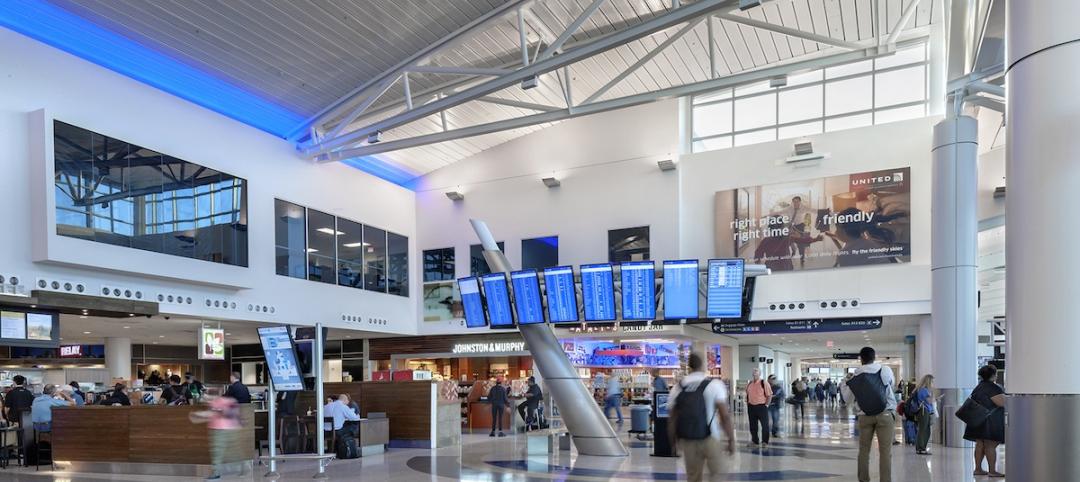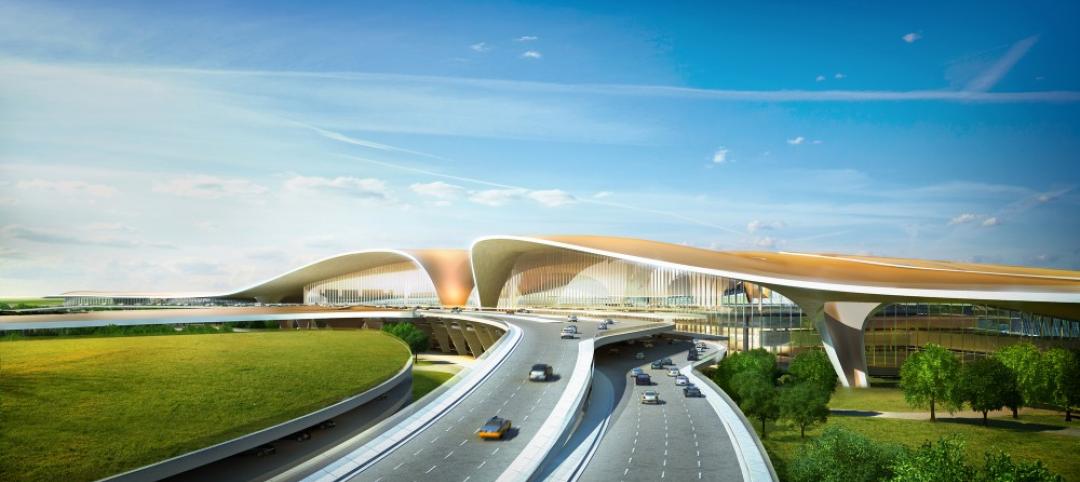Global design firm Populous, with Qualtrics, has released the results of a national survey that can help owners and operators of airports understand how COVID-19 has influenced passengers’ expectations and fears during travel.
With responses from nearly 2,200 people age 18+ who have taken at least five trips over the last 18 months for business or leisure, the survey revealed data and potential solutions to an array of concerns, including security checkpoints, food and beverage purchases, gate boarding and arrivals and more.
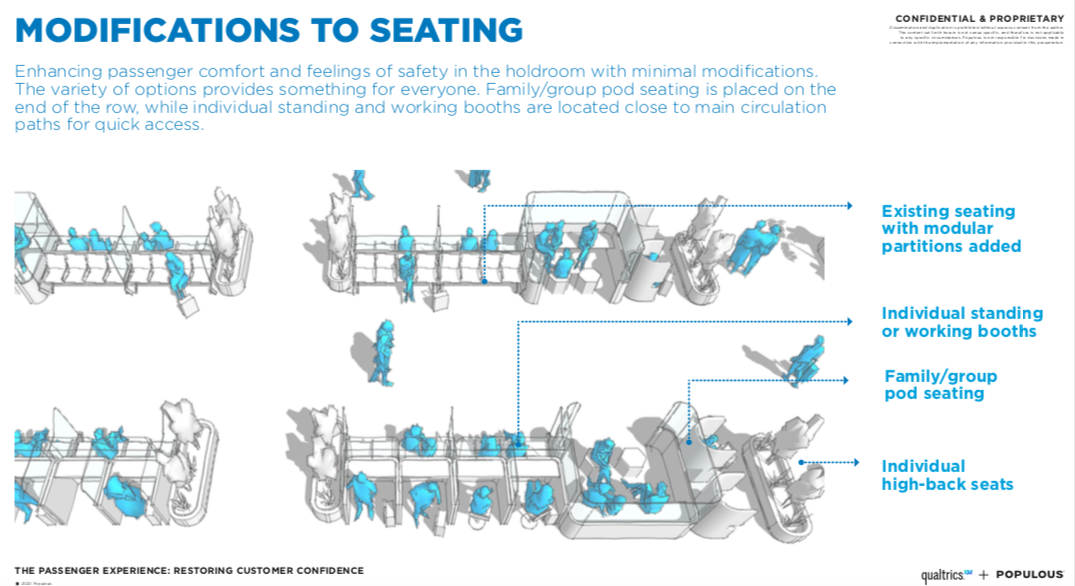
“While travel was very limited during the start of the pandemic, passengers have begun to travel again, either for leisure or business, and it’s important that airports are taking the proper steps to a safe environment and pleasant experience for these passengers,” said Geoffrey Ax, Populous Americas Aviation Market Leader and Principal. “With the results of our survey with Qualtrics, we are able to help our airport clients develop achievable solutions that can help them regain passenger confidence and trust.”
Overall, business travelers were the dominant group of respondents planning to travel in 2020 at 84 percent, over leisure travelers, of which only 71 percent planned to travel this year. In general, 79 percent of all respondents were comfortable going to an airport with the proper protection and protocols in place, such as wearing masks and social distancing, and limiting the number of passengers in the concourse.
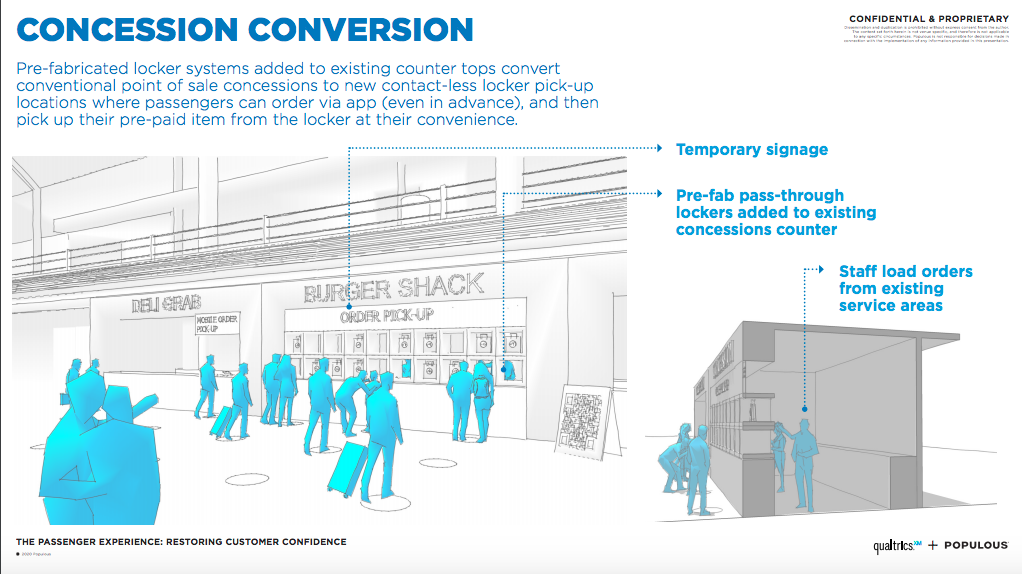
Among the top concerns impacting passenger trust and confidence were the ways staff and passengers will behave. Nearly 70 percent of travelers were concerned with someone around them having COVID-19, with a close 66 percent were concerned about others not following CDC guidelines. The majority of business and leisure travelers were also concerned about specific areas around the airport; seating locations being first, with security checkpoints a close second.
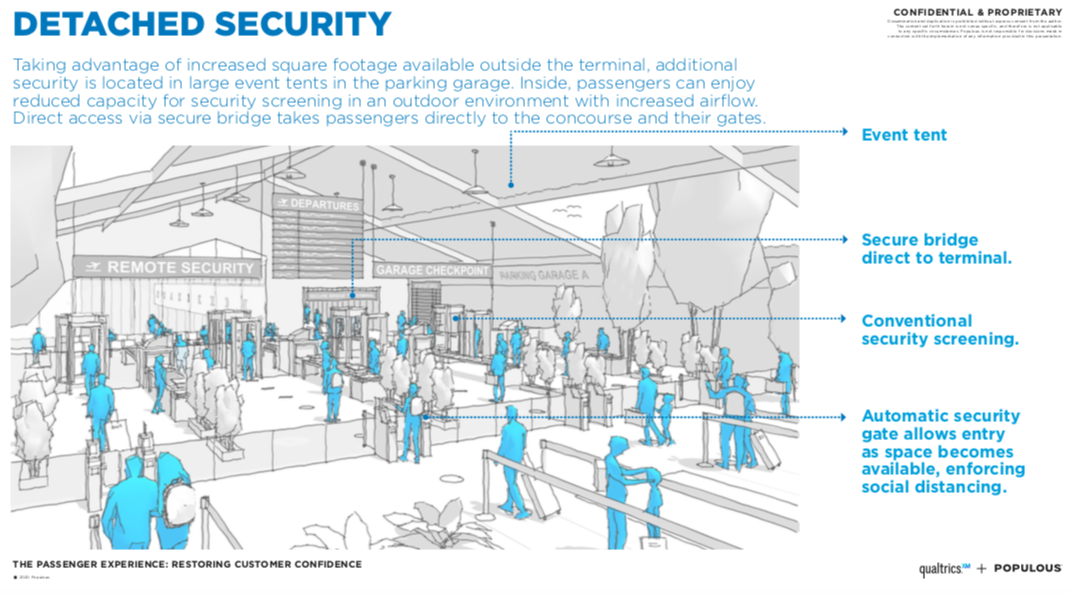
Other findings from the survey include:
– Transportation: The COVID-19 pandemic is even changing the way that passengers arrive and depart the airport. In cities, a huge number of passengers took public transportation (decreased two percent) or ridesharing services (preference decreased by 10 percent). Now, the percentage of travelers who were willing to drive their own car to the airport increased six percent, and those who would get rides from family and friends increased five percent. The data found in this survey will help airports devise a better plan for pickup and drop-off areas, which in many cities, are already congested. Visible and color-coded numbered beacons can provide unmistakable pickup locations so that passengers and drivers can easily find each other.
– Security Screening: Bringing to mind security screenings, travelers’ picture long, dense lines, and lots of touchpoints. The survey revealed that about two-thirds of travelers are concerned with maintaining social distancing while going through security, and 84 percent were willing to use a phone app for a timed entry experience. By implementing timed entry, virtual queuing and detached security checkpoints at airports, capacity can be limited, and passengers will be notified when they should arrive, and which entry and security line to use. Queuing modifications include barriers between different security lines, which also help to maximize space, as a socially distanced security line takes up lots of square footage.
– Hold Rooms: As the number one concern is interaction with other passengers who might have been exposed to COVID-19, the hold rooms, or areas where passengers wait to board the plane, is an area of worry. By creating a hold room layout that supports social distancing, with a combination of seated and standing partitions, airports can separate passengers who are seated, boarding, deplaning, or interacting with airline staff. The creation of individual and group pods, especially ones with access to charging stations and luggage storage, are also a great option to ease passengers’ concerns. These pods could also be rented, so airports could regain some lost revenue.
– Food & Beverage: For many flyers, the first stop after the security checkpoint is a food and beverage station or retail shop to stock up on in-flight snacks and reading materials. The survey found that although passengers intended to arrive early to the airport during COVID-19, they are less likely to spend money on food and beverage; 70 percent of passengers preferred to use an app to order food and beverage for pickup or delivery. Airports could consider a temporary conversion of food courts that include modular pod seating configured to accommodate multiple user groups, or locker service for pre-ordering and pickup of food.
Related Stories
Airports | Aug 31, 2015
Small and regional airports in a dogfight for survival
Small and regional airports are in a dogfight for survival. Airlines have either cut routes to non-hub markets, or don’t provide enough seating capacity to meet demand.
Airports | Aug 31, 2015
Airports expand rental car facilities to ease vehicular traffic at their terminals
AEC teams have found fertile ground in building or expanding consolidated rental car facilities, which are the No. 1 profit centers for most airports.
Airports | Aug 31, 2015
Experts discuss how airports can manage growth
In February 2015, engineering giant Arup conducted a “salon” in San Francisco on the future of aviation. This report provides an insight into their key findings.
Airports | Jul 28, 2015
Plans to make over New York’s aging LaGuardia Airport are revealed
The complete redesign, devised by a panel of experts, would unify terminals, relieve ground traffic congestion, and install state-of-the-art amenities.
Airports | Jul 22, 2015
MUST SEE: JFK airport taps Gensler to design terminal for animals
Pets can enjoy luxurious spa and grooming services before being transported directly to their flight from the terminal.
Airports | Jul 1, 2015
FIRST LOOK: JetBlue opens sprawling green rooftop at JFK International Airport
The 4,046-sf rooftop includes landscaped green spaces, seating for 50 people, 400-sf children’s play area, and a 400-sf dog-walk area.
Sponsored | Airports | Jun 5, 2015
Exposed glulam framework offers quiet complement to Jackson Hole airport’s mountain backdrop
A three-phase expansion and renovation, which began in 2009, nearly doubled the size of the aviation hub; the only one located in a national park
Airports | Apr 21, 2015
Trends driving airport construction
Upgrades to aviation infrastructure have not kept pace with the increase in airport traffic or even at a level sufficient to accommodate the life cycle of our many dated terminal facilities. Until now.
Airports | Feb 6, 2015
Zaha Hadid-designed terminal in Beijing will be world’s largest
The terminal will accommodate 45 million passengers per year, and will be a hub for both air and rail travel.
| Jan 2, 2015
Construction put in place enjoyed healthy gains in 2014
Construction consultant FMI foresees—with some caveats—continuing growth in the office, lodging, and manufacturing sectors. But funding uncertainties raise red flags in education and healthcare.


